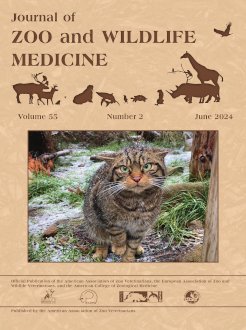Feeding of managed populations of giant anteater (Myrmecophaga tridactyla) is challenging in injured patients that present with anorexia. This report describes an approach for esophagostomy tube placement in this species. Cadavers of two adult giant anteaters were used for technique development. The animal was positioned in dorsal recumbency, and a guide feeding tube was inserted orally into the esophagus. A ventral midline incision in the midcervical region was made to access the esophagus and to protect submandibular salivary glands. The cervical musculature was dissected and retracted laterally to the right, the vagosympathetic nerve trunk was identified and preserved, and the esophagus was incised over the guide tube. The guide tube was removed to facilitate placement of the definitive tube, which was premeasured from its insertion point in the midcervical area to the level of the seventh–ninth intercostal space. The tube was secured to the cervical skin on the left side with a finger-trap suture.
How to translate text using browser tools
13 June 2024
DESCRIPTION OF ESOPHAGOSTOMY TUBE PLACEMENT IN TWO GIANT ANTEATER (MYRMECOPHAGA TRIDACTYLA) CADAVERS
Gabriel C. Camargo,
Sheila C. Rahal,
Ricardo S. Ichikawa,
Andre L. Filadelpho,
Heloisa C. Lima,
Elton L.R. Oliveira,
Anneke Moresco
ACCESS THE FULL ARTICLE





